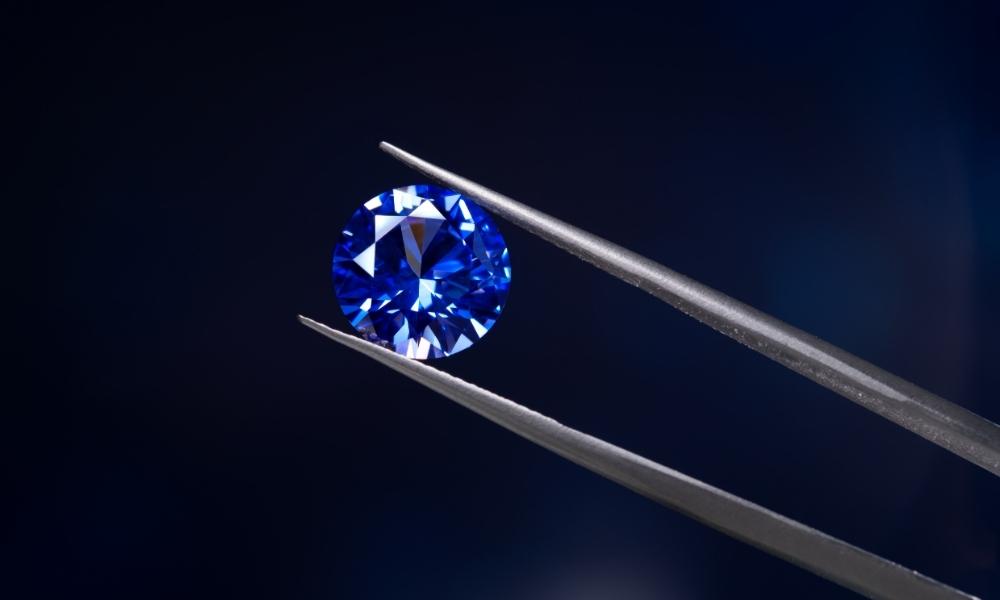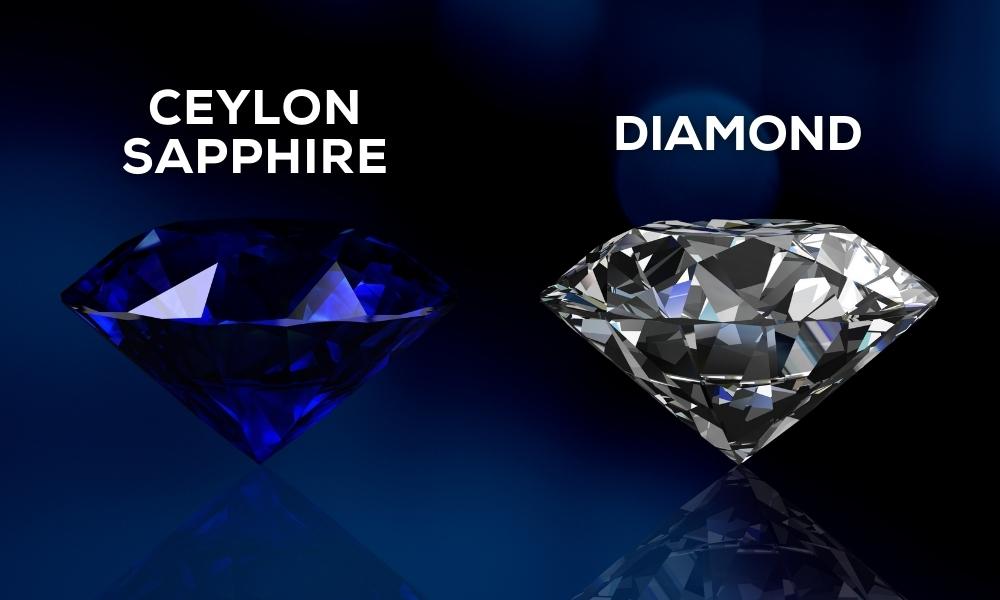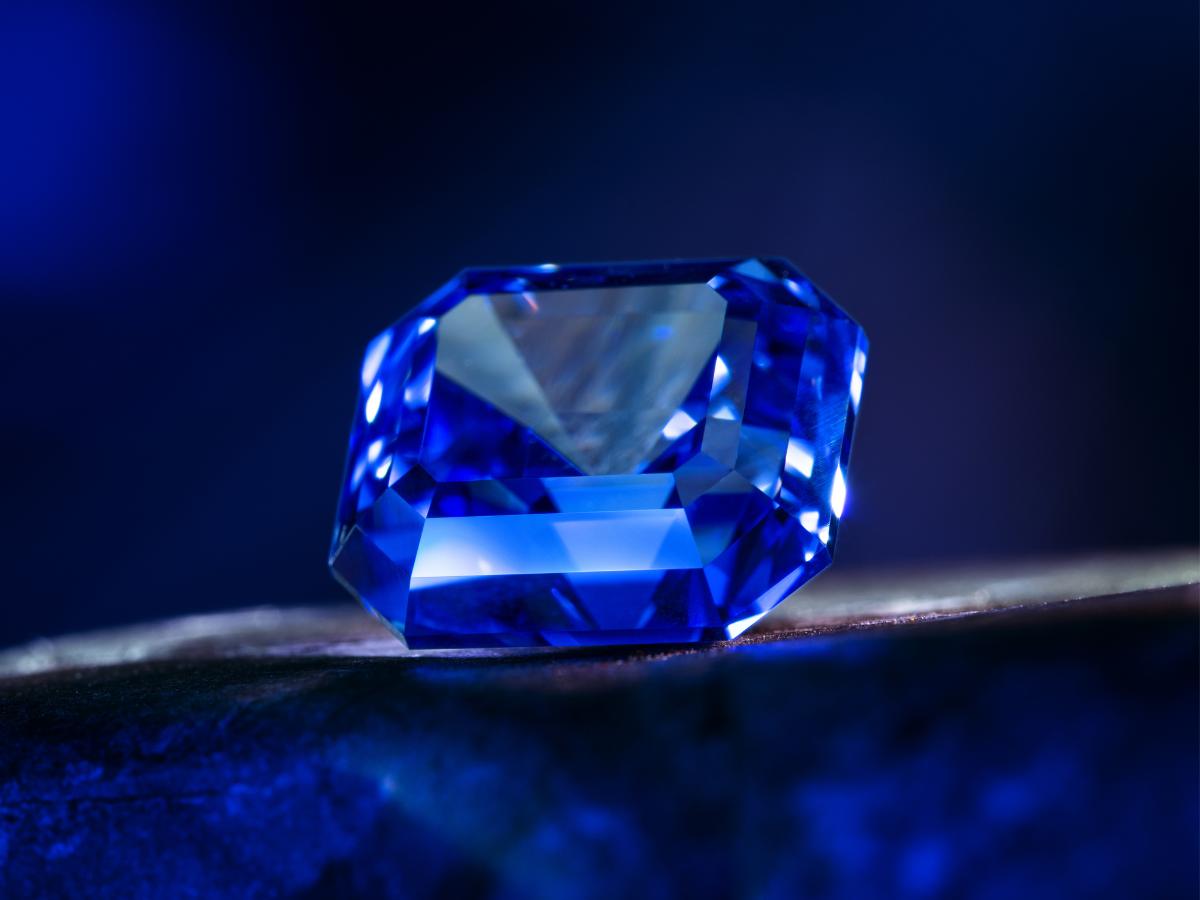Ceilão was the name of Sri Lanka during the colonial conquest in 1505 by the Portuguese. The Dutch and Britain called it Zeylan but this eventually changed into Ceylon when the English colonized India starting from 1798 even though this country gained its independence in 1948, it was known as Ceylon until it was changed to ‘Sri Lanka’ in 1972. Sapphires from Sri Lanka are still commonly known as Ceylon sapphire and used on many engagement rings made out of fine gems in brilliant colors that resist damage.
The luminosity, charm, and brilliance of the natural Ceylon sapphires will never stop stealing many hearts in our world. Blue sapphire is the national gemstone of Sri Lanka.
Table of Contents
What makes Ceylon Sapphire special?

Vivid Medium-blue hues are distinguishing features of Ceylon sapphires. There is the best density of gem-bearing rocks which is 90% of its land mass. The exceptional shade of ‘cornflower’ blue possessed by the luminous mid-blue these sapphires makes them very popular and is its uniqueness.
Ceylon sapphires are among the finest available. The best jewels out there come from Kashmir, but the mines in this area have been shut down for several decades now and therefore do not provide a continuous supply of such precious stones to the market.
Identification of Real Ceylon Sapphire

Below are some basic methods you can apply to figure out if your Ceylon sapphire crystal is real or fake.
Firstly, one has to check whether there are any imperfections or impurities. Using a magnifying lens, check. Pay careful attention to the sapphire’s surface for verification. In case it is a natural gemstone, there will be some imperfections on the surface caused by nature’s development. Although Ceylon natural sapphires may occasionally be flawless, even traces of inclusions confirm it is a real stone. Artificial sapphires have no inclusions. In most cases, you can observe inclusions with the naked eye, but in some, they require 10x magnification.
Besides a simple breath test may also confirm the validity of Ceylon sapphire. It only takes a fogging of the sapphire to identify it. Monitor the duration of the mist. If it is a natural stone, the fog will vanish within seconds. Alternatively, it takes a few seconds longer for the synthetic sapphire crystals to disappear.
Refraction of light for a Ceylon sapphire can also determine its authenticity. In complete darkness, test the sapphire with a flashlight. You can observe a variety of colors in the crystal if it is an imitation sapphire (a glass). True sapphire gems reflect the rays of the same color.
The Ceylon sapphires are famous for their intense blue color, and the Sri Lanka mined Sapphires have different tints. There can be pink, yellow, green, and violet Ceylon colors.
The wonders have been sliced off a virgin natural sapphire stone. Above the copy, you will still get corundum. This is the most precious, rarest, and natural gemstone. A natural unheated sapphire can be found at the source if you visit it while trading gems in today’s day and age.
Ceylon Sapphire Properties
These sapphires belong to the corundum family of minerals, just like other sapphires. The following are some essential characteristics of Ceylon sapphires:
Chemical Composition
Al2O3 is the component of sapphires, notably Ceylon sapphires. Trace elements such as iron and titanium affect sapphire’s hue.
Hardness
Outstanding hardness is a well-known attribute of sapphires. They receive a score of 9 out of 10 on the Mohs mineral hardness scale. One reason sapphires are so popular in jewelry is that they are strong and appropriate for daily use.
Color
Ceylon sapphires are available in an array of hues. Although there are other shades of sapphire, such as pink, yellow, orange, and green, the most well-known color is blue. Color’s purity and intensity influence the sapphire’s worth.
Clarity
The existence of internal inclusions or faults is indicated by a Ceylon sapphire’s clarity. Natural flaws called inclusions can be present in practically all gemstones. Certain sapphires hold value due to their minimal or absent apparent inclusions.
Cut
The shape and facets of a Ceylon sapphire define its cut. The well-cut sapphire brightens the brilliance of its color quality. The overall form and cost of a gemstone can also be impacted by the cut.
Origin
The gemstone is from Sri Lanka as the name “Ceylon sapphire” implies. Although the stone’s physical characteristics are not affected by its geological origin, the phrase indicates a certain quality and is prestigious in the gemstone industry.
Heat Treatment
To improve their color and purity, many sapphires—including Ceylon sapphires—go through a heat treatment process. In the gemstone industry, this is a customary and widely acknowledged procedure.
Ceylon Sapphire Uses

Similar to other gemstones, Ceylon sapphires are adaptable and have a wide range of uses. These are a few typical applications for these sapphires:
Jewelry
Jewelry is the most common use of Ceylon sapphires. Blue sapphires are the most widely used gemstones for exquisite jewelry, including bracelet pendants, earrings, and engagement rings. Since Ceylon sapphires come in varied colors, they are ideal for different and unusual jewelry designs.
Engagement Rings
For engagement rings, people frequently use blue Ceylon sapphires instead of classic diamonds. Because of their brilliant colors and durability, sapphires are a popular choice for this unique piece of jewelry.
Collector’s Items
Gemstone collectors may have their eye on exceptionally uncommon and superior Ceylon sapphires. These collectors frequently value stones with historical significance, extraordinary purity, and distinctive colors.
Investment
Certain people invest in premium gemstones, such as Ceylon sapphires. Gemstones can increase in value over time, particularly if you maintain them well and they have extraordinary features.
Heirlooms
Sapphires continue to be passed down as family treasures from generation to generation because of their durability. Ceylon sapphires, which are famous for their color varieties and history behind them are meaningful presents.
Corporate and State Gifts
Gemstones, such as sapphires, are given as corporate or diplomatic gifts in several cultures. You can retain them as stand-alone pieces or add them to jewelry.
Industrial Applications
Sapphires, especially Ceylon sapphires, are less common, yet they can be used in industry. There are occasions when watch crystals, scientific equipment, and other special items are made using synthetic sapphires.
Art and Decorative Pieces
Artistic objects and ornaments make use of Ceylon sapphires. Talented craftspeople use these jewels to make elaborate sculptures, decorations, and other works of art.
Ceylon Sapphire Cost
Sapphire prices may vary widely, from various aspects. The cost of sapphire ranges from as low as $25 per carat to over 10,976 dollars per carat. A 1-carat blue sapphire may perhaps cost as low as $450 to $1,600 depending on quality.
The region of origin and the 4 C’s determine price to a large extent. The most crucial aspect of price is color. The best sapphires are those with a bright deep blue color.
In light of this, one can argue that the outcome is accumulative price tolerance and differences in prices between two sellers. Furthermore, a lot of Ceylon sapphires are not certified therefore comparing qualities is harder as you cannot compare apples to apples.
Ceylon Sapphire vs. Diamonds

The Mohs hardness of Blue Ceylon sapphires is 9, which correlates to diamonds having a rating of about 10. Thus, sapphire gems are very popular in jewels for making jewelry because of the desire among consumers to get long-lasting gemstones.
A hardness grade for a gem determines its scratching extent.
Diamonds and sapphires can withstand intense heat. For long-lived gem jewelry, select a stone at the higher end of the Mohs scale unless you’ll wear it only once in a blue moon.
Stylistic versatility is another thing that makes the blue gems so popular. Their dark, blue color makes it possible for them to be surrounded by other types of smaller and glittering stones, they may also come in different shapes like ovals cut emerald shape or round form.
Regardless of the cut and placement of Ceylon sapphire, its beauty, and elegance are obvious.
While colorless diamonds are typically the most prevalent choice for engagement ring stones, it seems that many women do not know that such a stone exists in various shades. Diamonds come in any color of the rainbow.
Sapphires are comparable to rubies. Although blue sapphires are common, the Gemological Institute of America also mentions that this stone may be encountered with violet, green yellow orange pink purple, and intermediate colors.
If you want to continue the tradition with a timeless piece of jewelry, diamonds may be the right thing for you. Sapphires are a great choice for saving on your engagement ring or Jewelry etc., without having to compromise in terms of standing out from the crowd.
(FAQs) about Ceylon Sapphire
Q1. Are Ceylon Sapphires valuable?
Ceylon sapphire’s prices range from about $615 per carat to more than $7000 per carat. There are a variety of colors and sizes of it. This particular corundum gem is uncommon.
Q2. How can you tell if a Ceylon sapphire is real?
White streak is a characteristic of genuine sapphires. Inspect the surface: Inspect the visible surface of rough sapphire for any free-form natural defects such as inclusions, cracks, or growth lines. Natural rough sapphires have these properties and they serve as clues to genuine.
Q3. What color of sapphire is the most expensive?
The most expensive and most purchased color of sapphire is the blue one, including royal blue ones. The initial cost will be lower for lighter blues which will then increase as the shade becomes richer and more royal; after a point when darkening occurs, they are likely to pick up similar price tags to those of light colors.
Q4. What is the quality of Ceylon sapphire?
The highest-grade sapphire currently on the market is Ceylon. The sapphires range in color from pale blue to dark blue, with the darker hue indicating a finer sapphire. Ceylon stones are rarely too dark, in contrast to Thai, Australian, or African sapphires.
Q5. Which color of sapphire is rare?
Padparadscha Sapphires are the rarest of sapphires. These extremely rare stones are unknown to most, but when discovered usually become an absolute favorite. They are strikingly beautiful and almost no other colored stone compares to this unique mix of pink and orange.
Stay Tuned to Gems Tycoon for all gems-related articles.









